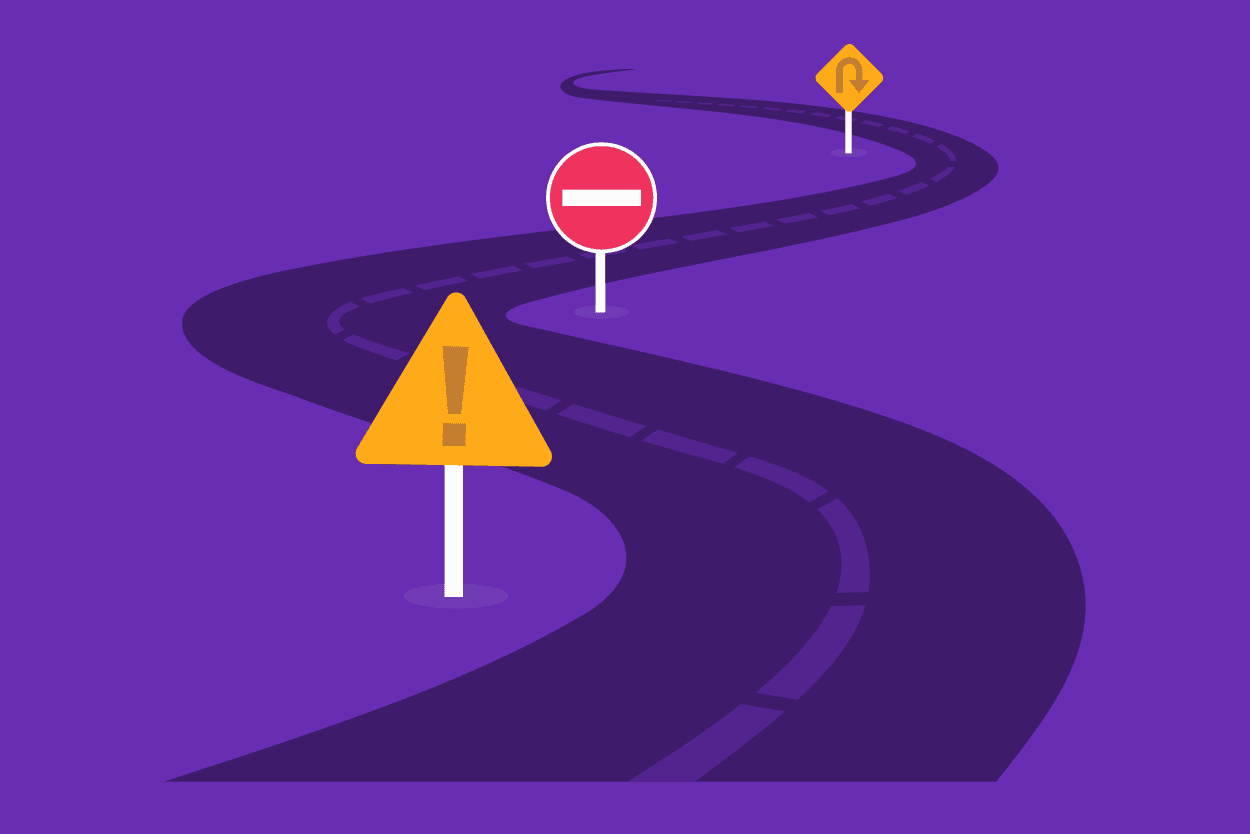8 min read
Is Employee Burnout Taking a Hidden Toll on Your Workplace?
 Claire Wiseman Imber
:
August 4, 2021
Claire Wiseman Imber
:
August 4, 2021

When the White House promoted Summer 2021 as a “Summer of freedom. A summer of joy” in a letter to encourage local officials to hold public events during the Fourth of July holiday, it seemed like there was plenty to celebrate.
Vaccinations were on the rise, COVID-19 case counts fell, and states started to lift emergency restrictions — essentially enabling a “return to normal.”
However, employers face a different reality on the work front, especially as the Delta variant emerges as an increasing threat and the pandemic stretches into the second half of 2021. Many experts say workers are close to their breaking point. After more than a year of long hours, increased stress, and work-from-home life balance, burnout has emerged as a major driver of employee turnover.
Burnout threatens not just the mental health of workers but the financial stability of organizations. In other words, it’s a problem you can’t afford to ignore. In this post, we’ll talk about the factors that cause employee burnout, what HR professionals can do to prevent it, and how to help your burned-out employees in 2021.
Defining Employee Burnout
Burnout is considered an official “occupational phenomenon” by the World Health Organization (WHO). That means it’s not a medical condition but rather a reason people seek medical help. And during the pandemic, it’s become even more pervasive. According to the WHO, there are three main elements of burnout:
- Feelings of exhaustion
- Increased mental distance from or feelings of cynicism about work
- Reduced professional efficacy; i.e., doing a worse job at your job
As you communicate with coworkers in person or on video, you might spot a few burnout symptoms. Employees experiencing this phenomenon could be distracted and less productive, easily frustrated and avoiding social interactions — virtual or otherwise — or taking more sick days than before.
Burnout affects what we typically imagine are overworked fields during a global health crisis; one study by the Kaiser Family Foundation and The Washington Post found that 55% of frontline healthcare workers feel burned out or anxious (49%). In a separate Blind survey of 11,000 tech workers, 57% of respondents said they currently feel burned out.
New data indicates that remote workers are working longer hours, with 61% saying it’s more challenging to unplug during “off-hours,” unlike their onsite counterparts. Additionally, 42% of essential workers reported increased rates of mental health issues, substance abuse (25%), and suicidal thoughts (22%).
Factors Driving Burnout
Burnout is neither new nor unique to the pandemic. In fact, 53% of millennials were already burned out pre-COVID and remain the most affected population, according to Pew Research. But when we look at the more profound impact of how the pandemic has contributed to employee burnout, a few factors stand out. They include:
Caregiving Pressures – For Women, in Particular
Women were disproportionately affected by the COVID-19 pandemic. In 2020, 2.3 million women left the U.S. workforce, with 1 in 4 women considering leaving the workforce or downshifting their careers (for men, it’s 1 in 5). For working mothers, particularly those with young children, the rate was 1 in 3. While all women were affected, according to McKinsey & Company, three major groups experienced some of the most significant challenges: working mothers, women in senior management posts, and black women.
The data suggests something that’s been well documented: Women employed full-time grapple with the “double shift” burden, where when one work shift ends, their domestic “shift” begins. That’s because mothers are more than three times as likely as fathers to bear the housework and caregiving burdens, spending an additional three or more hours per day on domestic responsibilities. And for single moms, it’s even worse — 10% more single mothers report spending an additional three or more hours per day on housework and childcare overall.
To make matters worse, years of progress for women in corporate America may have stalled. Between January 2015 and January 2020, the number of women in senior VP positions increased from 23% to 28%; C-suite from 17% to 21%. When we consider that 53% of women accounted for labor force exits in 2020, a step back from employment and a related drop in promotion rates for women could signal a downward trend in representation.
Hiring Challenges
Even though job growth accelerated to a record high of 9.2 million in May, and states reported a 24,000 drop in new unemployment claims for the week ending July 24, hiring remains sluggish. And the anxiety around workforce staffing is palpable.
Our recent Pulse Survey asked 334 HR pros about their hiring challenges and plans for 2021. Among our respondents, 80% said they’re worried about retaining employees in 2021; 76% worried about hiring top talent. The current climate forces HR leaders to rethink and curate a competitive benefits package that looks beyond compensation and health insurance and focuses instead on employee wellbeing, both inside and outside of work. This brings us to our next point …
Employees are Seeking Mindful Change
Despite the number of open roles, employees are also seeking meaningful change. In our April survey of more than 1,000 consumers, 56% of respondents told us that the last year had changed how they view their benefits and made clear what they want most. When asked to choose three benefits they would find most valuable, employees listed the following:
- The ability to work from anywhere (57%)
- Unlimited PTO (52%)
- Full tuition reimbursement for professional development (48%)
In this new world, competitive compensation will only go so far. After over a year of challenge and change, employees today crave flexible policies that will allow them to live and work on their terms. In addition to remote work capabilities, increased flexibility could take on different forms for different workforces. It could mean adopting a hybrid work model, having staggered start times to allow for caregiving needs, offering child- and elder-care assistance and self-care days, or if possible, a companywide wellness week off. From remote work to benefits, employees expect pandemic workplace adaptations to stick, and if they do not have them, 1 in 4 workers plan to look for a new job when the pandemic ends.
The Cost of Burnout
With effects this widespread, it’s not surprising that burnout is an expensive problem. A Stanford Graduate School of Business study found that workplace burnout costs up to $190 billion per year in additional healthcare spending. We already know that depression and anxiety add up to a loss of $1 trillion in productivity per year.
Just like those mental health concerns, burnout threatens physical health as well as workplace wellness and interpersonal dynamics.
Does Short-Term Counseling Really Work?
How can counseling help employees cope? Short-term counseling solutions are one answer, with none of the intimidation factor—or the cost—of traditional therapy.
Learn more »
How to Deal with Employee Burnout
To drive employee satisfaction and productivity, you must head off burnout before it starts. The causes of burnout can be countless, especially with a pandemic as a backdrop. It comes up after long hours, caretaker responsibilities, uncertainty about the future, an accumulation of personal issues, or additional pressure from workplace morale-killers, like layoffs. More often than not, though, burnout is a symptom of one thing: a lack of employee support.
Those experiencing employee burnout are more likely to feel overworked and underpaid. When employees feel burdened with an unmanageable workload, are working longer hours, or don’t have the support of their managers and HR team, their excessive stress can quickly progress to burnout.
“Employers can help tackle burnout by enforcing signoff after work,” said David Cusick, Chief Strategy Officer and Executive Editor of HouseMethod, a provider of comprehensive expert research on home services. “While remote work has allowed for flexibility, it’s important for employees to unplug and not be on-call 24/7. Encourage a regular work schedule amid flexibility and allow employees to sign off after their specified work hours. It will help minimize overwhelming feelings and give them time to rest and recharge for the next day.”
A few steps employers can take to get ahead of employee burnout include:
-
Training Managers to Spot Employee Burnout as It’s Happening: Management plays a crucial role in keeping employees engaged and helping them feel supported. Those two factors play a significant role in staving off burnout. A manager who asks, “how are you?” and means it can be the difference between employees who mentally check out and those who feel supported and heard. Give managers the tools they need to regularly check in. At HealthJoy, we use a tool called 15/5 to encourage weekly employee check-ins, monitor our workload and productivity, and ask a few questions about the work environment.
-
Addressing Stressors Before They Grow to Burnout: The last year has tested employee well-being. Whether it’s parenting, teaching, spending more time alone in a single space … there are plenty of pandemic-related challenges to a mentally healthy workplace. As the author of the Stanford Graduate Business School Study pointed out, workplace wellness programs sometimes overlook the workplace itself as a significant source of declining health. Wellness programs don’t address systemic management issues or cultural problems. A top-down approach to these stressors is a critical piece of addressing employee burnout before it spins out of control.
-
Encouraging Breaks (Big and Small): We all need a break from time to time, particularly during a time when there’s little separation between our workplace and our home. A few days away from the grind can do wonders for mental and emotional health. In terms of heading off burnout, don’t overlook this step. HR can encourage senior leadership to lead by example and make the process of requesting time off as smooth as possible. Some employers, including Bumble, have begun implementing collective time off as a way to encourage employees to fully disconnect from work. If that’s not in the cards, small daily breaks can also make a difference. A walk around the block, lunch outside the office, or a break for meditation or stretching during the day can help employees clear their minds and return to work refreshed. Encouraging these behaviors among senior leadership is a first step toward changing your company’s culture on a daily basis.
-
Reminding Employees of Their Mental Health Benefits: As you work to shift your remote culture toward preventing burnout, you can’t ignore the employees already experiencing this phenomenon. Employees already experiencing burnout might not feel comfortable seeking help. Accessible and affordable mental health benefits are an essential element of every employer’s battle against burnout. An Employee Assistance Program (EAP) offers a confidential solution at a low cost to employees. Employees struggling to achieve a work-life balance may find relief in short-term counseling, which can prevent spirals that may lead them to lean on drugs or alcohol for assistance (see The First Step in Handling Employee Substance Abuse for more). Studies show EAP services are a great way to increase employee productivity, happiness, and wellness. They deliver a $6.47 return on investment for every $1 spent. It’s likely why 75% to 95% of organizations offer an EAP.
-
Encouraging Participation in Behavioral Health Programs: In contrast to the short-term counseling available through an EAP, behavioral health programs offer employees therapeutic resources to help them develop healthy behaviors. That usually includes therapy, and in some cases, can consist of support for healthy eating, movement, and meditation. Behavioral health practitioners treat conditions that impact overall wellness, including physical and mental health. Teletherapy is the focus of HealthJoy Behavioral Health. It’s an online, video-based version of talk therapy. Teletherapy isn’t new, but it’s definitely lowering barriers to care and is often less expensive than traditional therapy. Research indicates varying teletherapy models can effectively treat depression, substance use, and post-traumatic stress disorder (PTSD), among other conditions. Its popularity surged during the COVID-19 pandemic when mental health providers were not seeing patients in person due to health risks, and stress levels were at an all-time high. And it shows no signs of slowing down. Sixty-two percent of consumers would prefer a virtual visit for their regular mental health visits, even as practices open their doors for in-person appointments.
-
Help Employees Understand the Value of Existing Benefits: To address burnout, it’s important that employers emphasize existing benefits and ensure employees feel supported. Yet when we asked, 12% reported they did not think their employers had their ongoing health and wellness in mind. Employers must use forward-looking communication tools, including in-app messages and text messages, to emphasize their most supportive benefits beyond open enrollment. By helping employees understand the extent to which their benefits are there for them, they can get ahead of burnout and nip turnover in the bud.
Too Big to Ignore
As employee burnout becomes more prevalent in this post-pandemic era, employers can’t afford to look the other way. Avoiding employee burnout will be a matter of creating a supportive culture, offering employees ways to decompress, and providing an outlet to discuss and treat employee burnout as it occurs. By emphasizing resources like supportive EAP and behavioral health programs, adopting more flexible work models, and exercising empathy, we can help ease employees’ pandemic burdens.
This post was first published in February 2020 and updated in 2021.

From Empathy to EAP: Mental Health Support for Returning Employees
These constantly-changing plans put employees in a precarious position: adding mounting fear, anxiety, stress, and worse to their existing workload.

Avoid These 2021 Open Enrollment Landmines
You might guess that tackling 2021 open enrollment amid this year’s upheaval would require an innovative approach. Yet as our 2021 State of the...





